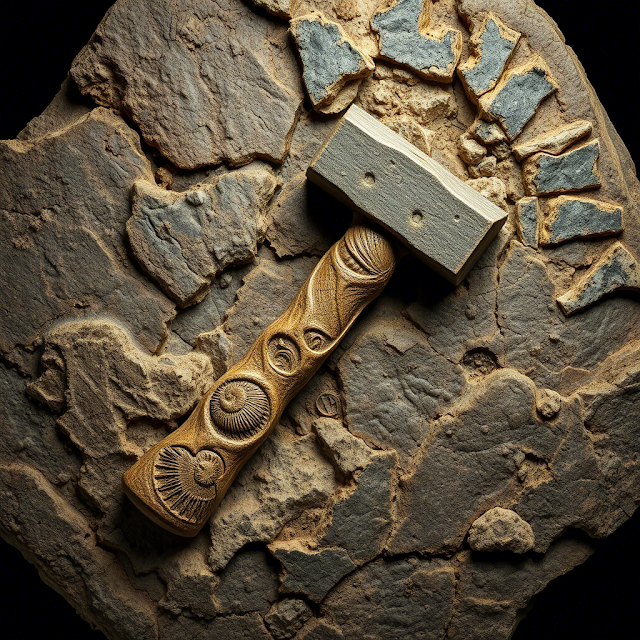Forbidden Archaeology: Artifacts That Shouldn’t Exist
Imagine finding a metallic gear embedded in a rock dated millions of years old, or human fossils next to dinosaurs. These scenarios may sound like science fiction, but they are part of a controversial field known as forbidden archaeology. This article explores the mysterious artifacts that defy accepted historical paradigms, their implications, and why, despite academic resistance, public interest in them continues to grow.
What Is Forbidden Archaeology?
Forbidden archaeology refers to the study and analysis of artifacts, structures, or fossils that — according to mainstream science — should not exist. These objects directly contradict the accepted timelines of human civilization, technology, and evolution.
The term gained popularity through the book “Forbidden Archaeology: The Hidden History of the Human Race” (1993), by Michael A. Cremo and Richard L. Thompson. The work presents evidence suggesting that modern humans may have existed millions of years ago — far earlier than the conventional timeline allows.
Why Are These Artifacts Ignored?
Modern science relies on well-established paradigms, but that can also lead to conservatism and resistance to new ideas. Many so-called Out-of-Place Artifacts (OOPArts) are rejected or dismissed because they don't fit the official narrative.
Three main reasons for this resistance:
-
Academic dogma: Changing the historical timeline would require rewriting entire textbooks and reassessing centuries of research.
-
Lack of archaeological context: Many artifacts are found in isolated discoveries or without controlled excavations.
-
Past frauds: The history of archaeological hoaxes makes many researchers dismiss unusual finds without serious analysis.
Artifacts That Defy Logic
Below are some of the most intriguing cases in forbidden archaeology:
1. The Baghdad Battery (Iraq/Iran)
Discovered in 1938, this ceramic jar contains a copper cylinder and an iron rod. Experts believe it could have functioned as a primitive electric battery, dating back to 250 B.C.
Implication: Ancient societies may have understood electricity long before Benjamin Franklin or Nikola Tesla.
2. The London Hammer (Texas, USA)
This hammer was found encased in a rock estimated to be 400 million years old. The wooden handle began to fossilize, and the iron head shows unusual purity.
Implication: The existence of human tools during a geological era before even modern dinosaurs challenges the entire evolutionary timeline.
3. The Klerksdorp Spheres (South Africa)
These metallic spheres, with perfectly symmetrical grooves, are dated to about 2.8 billion years old. Skeptics say they are natural formations, while others point to artificial characteristics.
Implication: Intelligent beings may have existed in an era when only single-celled life forms were supposed to exist.
4. The Paluxy Tracks (Texas, USA)
Fossilized human footprints were found alongside dinosaur tracks. Mainstream scientists claim they are erosions or hoaxes, but independent researchers argue they are genuine.
Implication: Could humans and dinosaurs have coexisted? That would rewrite our entire understanding of prehistory.
5. The Antikythera Mechanism (Greece)
Recovered from a shipwreck dated around 100 B.C., this complex device with gears was used to predict astronomical positions. It's been dubbed the “ancient computer.”
Implication: Astronomical and mechanical knowledge in Ancient Greece was far more advanced than previously believed.
Modern Relevance of Forbidden Archaeology
Why is this topic more than just a curiosity?
-
Inspiration for innovation: Many engineers and inventors draw from ancient concepts to develop new technologies. Lost technologies could offer sustainable solutions today.
-
Deconstructing colonial narratives: Highlighting ancestral knowledge from African, Asian, and Indigenous civilizations counters Eurocentric history.
-
Encouraging curiosity and inquiry: Science and spirituality can coexist when the mind remains open to mystery.
Ethical and Scientific Challenges
Caution is needed. Not all "forbidden" artifacts are genuine — some are hoaxes, misinterpretations, or sensationalized. Forbidden archaeology needs:
-
Multidisciplinary analysis: Geology, physics, chemistry, and history must collaborate.
-
Transparency in discoveries: Independent researchers should have access to sites and materials.
-
Balance between skepticism and open-mindedness.
The Internet and Public Involvement
Thanks to the internet, videos, blogs, and independent channels constantly share new discoveries and theories. While this broadens the conversation, it also increases misinformation. The public must seek reliable sources and cross-check information before accepting or rejecting any discovery.
Recommended backlinks for deeper exploration:
Conclusion: History Is Still Being Written
Forbidden archaeology invites us to question what we take for granted. What seems impossible today may be accepted fact tomorrow. Many great scientific revolutions began as intellectual heresies.
The real challenge is not just discovering the past, but having the courage to reimagine it. The artifacts that shouldn’t exist are out there — waiting for those with open eyes, critical minds, and a thirst for truth.




.png)

.png)






